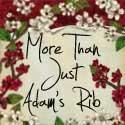
I remember the first dot matrix printer that my daddy hooked up to our pre-Windows computer. Twenty years ago, this was huge! Unlike today, though, there was no way to sneak through a late-night print job without waking the whole house, the back and forth rhythmic screech unending as it ate reams of mile-long paper folded in the yellow square bucket it sat upon.
Back then, each 8 1/2 x 11 sheet was connected to the next by a perforated line. Attached to the sides of this unending ribbon of paper were half inch strips marked by evenly spaced holes that helped the printer feed the paper through. This kind of paper saved a lot of taping together of sheets, especially when I was called upon to make a time line for my high school science class.
Assigned by a coach who was great on the ball field but less than enthusiastic about the classroom, the final project had to be hand drawn, hand colored, and thirty feet in length, depicting life from Precambrian single cell organisms through present-day life on earth. Paleozoic. Mesozoic. Cenozoic. Definitely not rocket science but incredibly time intensive.
I recently thought about what a time line of my life would look like if I spread it out like this on paper that reached across my living room and down the hall. Thirty-four years instead of billions. My mind immediately listed the births, marriages, and graduations, then shifted to family vacations, the famous first's, and finally to bullet after bullet composed of mostly losses.
I have watched cancer ravage my beloved great-grandmother's body until it withered to eternity; crumbled over the the poison wrought by one woman's life-altering lies; and fallen on my face over the loss of two never-born babies. I have felt the extreme emotional highs and lows of years of infertility treatments; endured the abandonment of all but one hand's breadth of our "friends"; and lived through the loss of my husband's livelihood.
It is so easy to get caught up in the loss, the bad, the "worst" the life has to offer. But to do so is to spin a lie of one's life, to cultivate a heart of ungratefulness for all our heavenly Father has given us.
Life isn't all bad. It's not always getting worse. Yet, this tendency towards seeing the world as spiraling towards imminent destruction seems to describe America's vision of itself and our world as a whole.
In sociologist Bradley Wright's new book, UPSIDE: Surprising Good News About the State of Our World, he explores America's tendency toward pessimism when it comes to just about everything in life.
In the very first chapter, Wright explains that while individuals may believe their lives are going well, they automatically assume others are doing worse than they are, a trend forty-five years in the making. As Wright states about this "optimism gap," "we tend to think that the grass is browner, not greener, in other people's yards...'It is as though there are two different countries, the one people know personally, which they are happy with, and the one they see on television and read about in the newspapers, which they think is in bad shape'" (20,22).
The reason we're pessimistic? Advocates who support a particular cause and the news media, which puts forth stories sure to make a big splash. Positive stories? Not so splashy.
Wright's text tracks statistical changes over time, breaking his analysis up into several distinct topics: finances, intelligence/education, health, stress/happiness, crime/war/freedom/faith, marriage/family, and the environment. In the end, he presents an overview chart comparing life in the United States today versus 30 and 60 years ago, although many of his statistics reach farther back to 1900, showing a century's worth of change.
Overall, except for a few categories (such as obesity and divorce/single-parent families), the book's data shows we should be counting our blessings to be living now versus sixty years ago. Since his book was presented as more for a secular audience, he did not discuss the fallacy of Christians divorcing at the same rate as non-Christians, but his blog gave those statistics.
While the book is less than a fun read, it is approachable and a worthwhile read to get a good picture of what is really happening in our world versus what the news media is depicting. If I have one criticism, it is that in a dry book of statistical charts and paragraphs analyzing the data, I would have liked to have seen more of Wright's humor that, when it came through, was really quite entertaining.
We as Christians are guilty of latching on to every last pessimistic story or statistic around because such ideas fit in with our theology of the world coming to an end with Christ's return. But before you start spewing a doom and gloom gospel on every street corner, read this book first.
*I receive a complementary copy of the book from the publisher but am in no way paid for my good or bad review.








No comments:
Post a Comment